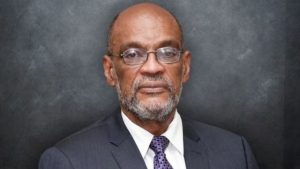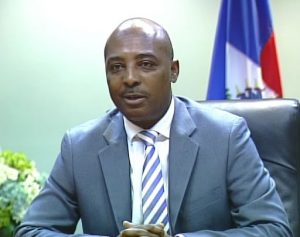Haití
INICIO
Países
Indicadores
Recursos

Jocelerme Privert
President

Nesmy Manigat
Minister of Education
# Population
11.4 M
# Students
3.912.057
# Teachers
88.008
# Schools
13.730
Completition and mean of schooling
GDP and growth
Government expenditure on education
Political participation index
Political context
Haiti declared independence in 1804. It is a semi-presidential republic with executive, legislative and judicial branches. The Haitian government is a multi-party system. The president is the head of state, directly elected by popular vote. The Prime Minister is the head of government, elected from the majority party in the National Assembly and appointed by the President.
The constitution dates from 1987, but its validity was suspended several times due to political violence, particularly after two coups (1991 and 2004). Today, the country is once again experiencing a major socio-political crisis due to the assassination of President Jovenel Moïse on 7 July 2021. In this unstable climate, the new president is Ariel Henry, who was appointed by Moïse two days before his death.
Economic and social context
Haiti has a population of 11,263,077 inhabitants (2019). There are two official languages, Haitian Creole and French.
Gross domestic product (GDP) was estimated at US$19.19 billion in 2018, with an annual growth rate of 1.2% and an annual inflation rate of 14.7%. The latest official poverty estimate (2012) suggested that more than 6 million Haitians were living below the national poverty line of USD 2.41 per day and more than 2.5 million were below the extreme poverty line of USD 1.12 (World Bank, 2020). The human development index is 0.503. It is in the bottom third of countries, with a ranking of 169 out of 189 (2019).
Environmental fragility is another major concern. Deforestation, poor agricultural practices and erosion are common in rural areas, and urban areas continue to expand without proper planning. The lack of basic infrastructure and planning makes the country particularly vulnerable to natural disasters such as earthquakes and hurricanes.
Educational context
Haiti is characterised by an educational organisation similar to the French system. The school year runs from September to June.
The 2015-16 census showed that out of a total of 3,912,057 students who were enrolled in schools; 22% belonged to the public school system and 78% to public schools. Public schools are run by the Ministry of Education, and private schools are run by individuals, non-governmental organisations (NGOs) or Catholic or Protestant churches. In the early 2000s, religiously affiliated schools accounted for 45% of non-public primary schools. Secular NGOs and for-profit schools accounted for 40 per cent of public schools and community schools, created by community leaders in response to parental demand, accounted for about 15 per cent of private primary schools.
Source::
Stone, R., Ziegles, N.,(2021). Country Review, Défis et opportunités dans le système éducatif en Haïti, Santiago de Chile: SUMMA
Banco Mundial : https://datos.bancomundial.org/indicator/SP.POP.TOTL?locations=HT
Photo credit: GPE KIX
Related content
Below, you will be able to identify strategies, research, innovations and country assessments.
Find more strategies, research, innovations and evaluations by clicking on see more resources.
Select Indicators
Learn more about the country and the region!
Select and visualise different dimensions, variables, indicators and countries by scrolling through a time range of 20 years, which you can download and share.
